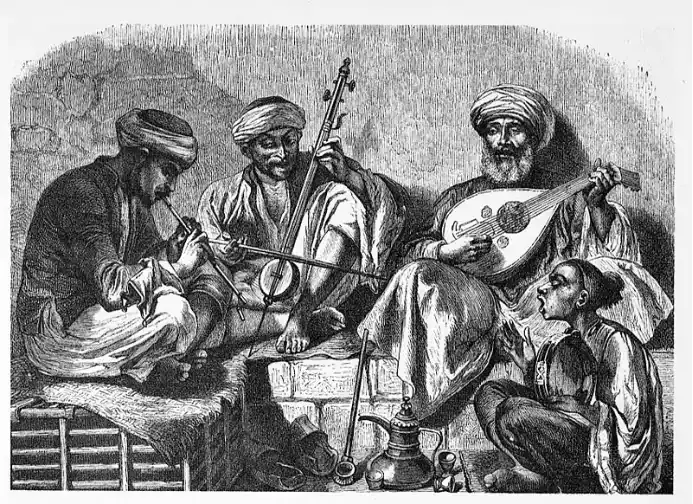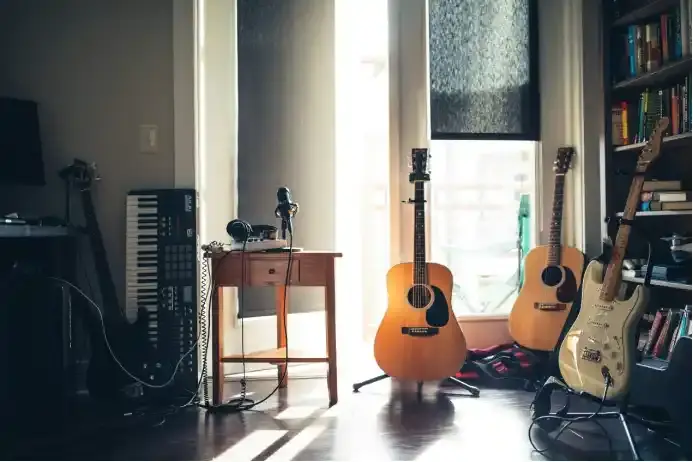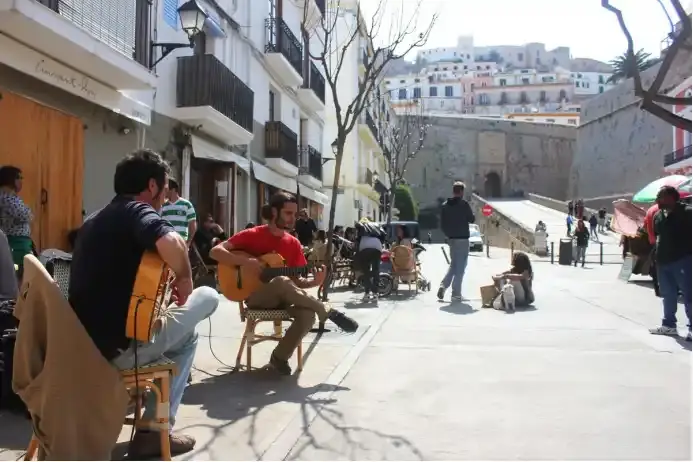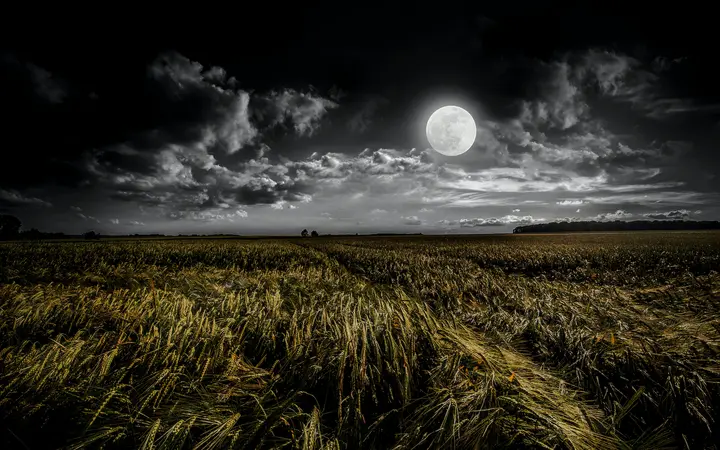Eastern musical maqams and western stairs
Eastern and Western maqams represent two distinct approaches to musical theory, each with its own set of stairs and traditions. Understanding these differences and similarities allows musicians and listeners to appreciate the rich diversity of world musical traditions. In this article we demonstrate the complexities of Eastern maqams and Western scales by exploring their historical roots, theoretical foundations, and impact on musical expression and culture. We also discuss how these systems have influenced each other through cultural exchange.
1- Historical context:

Western Stairs: Western music theory as we know it today has its roots in ancient Greek music, where the concept of musical styles was first developed. These musical styles were musical scales each starting with a different tone but following a specific pattern of full and half distances. The Greeks were introduced to seven musical styles, corresponding to what later developed into ecclesiastical musical styles during the Middle Ages. With the development of Western music during the Renaissance, Baroque, classicism and Romanticism, the Grand and Small Salman became the predominant. It then spread the 12-tone system that is the basis of Western music today.
Recommend
Oriental Maqam: The maqam system is deeply entrenched in musical traditions in the Middle East, North Africa and parts of Central Asia. The origins of the maqam system can be traced back to ancient musical traditions in Mesopotamia and Persia, which were later refined and documented during the Islamic era. Maqamat are not just ladders and scales but also include specific rules for melodic development. The concept of "rap" in Arabic music, which refers to a state of emotional euphoria or musical magic, is closely linked to the use of maqamat. Different maqams evoke different emotions, often chosen based on the context of the performance, the time of day, or the mood the musician wishes to convey to the listeners.
In the Islamic Golden Age, scholars such as al-Farabi and Ibn Sina documented the maqam system and laid the foundation for its formal structure. After that, the maqamat system evolved a lot, with the introduction of detailed classifications, regional variations, and specific maqams associated with different cultural contexts.
2- Theoretical foundations:
Western stairs: Western stairs rely on a system of spacers that divide the octave into 12 equal parts (semitones). Large and small stairs are created following specific patterns of full distances and half-distances within a 12-tone system.
Eastern Maqamas: Maqamat consists of intervals called subtle tones, which create a richer and more accurate palette of tones compared to the Western twelve tone system. The maqam system is more flexible and improvisive, allowing for a wide range of emotional expressions. In addition to these subtle tones, the eastern maqam consists of:
Genres: These are smaller units of the maqam consisting of three to five tones each, and the combination of different races gives each maqam its unique character.
Primary and dominant tone: Each maqam has a primary tone (beginning tone) and often a dominant or secondary tone, which acts as a focal point in the melody.
Editing: Although maqams are musical styles, they allow complex adjustments between different maqams within the piece, reflecting changes in emotional or narrative content.
3- Influence on musical expression:

Western music: Western music tends to emphasize harmony (harmony). The use of large and small stairs creates a specific feeling in music. Large stairs are often associated with happiness and triumph, while small stairs usually convey sadness or meditation.
Oriental music: Oriental music focuses on melody and emotional depth more. The use of subtle tones allows for more expressive shifts in mood, often conveying complex and subtle emotions. For example, the maqam of the rast often evokes a sense of pride, stability or strength, and the maqam of Hijaz is usually associated with spirituality, longing or melancholy, because of its distinctive second interval, while the maqam of al-Bayati is often used to express a range of feelings from joy to sadness, depending on the context and the way it is played.
4- Cultural exchange and mutual influence:

Throughout history, there has been a great cultural exchange between East and West, especially during periods of the Crusades, Andalusian civilization in Spain, and the Ottoman Empire. This exchange influenced the development of music in both regions.
The influence of oriental music on western music:
Andalusian music: Andalusian music had a profound influence on European music, especially in the development of early guitar and flamengo music, which bear the traces of oriental maqams.
Orientalism: In the nineteenth century, Western composers such as Debussy and Rimsky-Korsakov were inspired by oriental music, incorporating maqam-like styles into their compositions.
Modern fusion: Contemporary musicians and composers often mix Western stairs with maqamat, creating hybrid forms that incorporate microtonal elements into Western harmonic frameworks.
The influence of Western music on oriental music:
Western harmony: In the twentieth century, as Western music spread more widely, Western harmonic elements and musical instruments such as the piano and guitar were incorporated into oriental music. This has led to the emergence of new forms of music.
Globalization: With the advent of global music platforms, musicians in the Middle East have experimented more and more with Western genres, from jazz to electronic music, and incorporated maqams into these styles.
The relationship between eastern maqams and western stairs is a fascinating study of how two different musical systems develop in parallel, each offering unique ways of understanding and expressing music. Despite their differences, there was a rich history of cultural exchange that allowed these two systems to influence each other in many ways. Today, musicians around the world continue to explore the boundaries between maqam and stairs, creating new and innovative musical forms that build on their respective strengths. This ongoing dialogue between East and West not only enriches our global musical heritage, but also deepens our understanding of the language of world music.
![]()
Virtual reality technologies: How are they changing the way we learn and entertain?
Virtual reality is transforming how we learn and play—students can explore ancient civilizations or the human body in 3D, while gamers and movie lovers dive into immersive worlds. It’s also sparking creativity, letting artists and designers bring bold ideas to life in virtual spaces. more- ADVERTISEMENT
![]()
Traditional Syrian Glass Blowing : A Timeless Craft
Traditional Syrian Glass Blowing : A Timeless Craft more- ADVERTISEMENT
![]()
5 electronic games to develop your skills and intelligence
Discover how video games like SimCity, Stardew Valley, and Gorogoa can sharpen your mind, boost creativity, and help with planning and decision-making—all while having fun. Not all games are just for play; some are powerful tools for personal growth and learning. more- ADVERTISEMENT
![]()
Shocking fact: the moon is moving away from the earth!
The Moon is slowly drifting from Earth—about 3.8 cm a year—thanks to tidal friction. This tiny shift, tracked since NASA's Apollo missions, may eventually lengthen our days. Don't worry though; the Moon won't escape. It'll settle into a stable distance over time. more- ADVERTISEMENT
![]()
Will the earth keep heating up?
The summer of 2023 brought record heat, fierce wildfires, and deadly monsoons—clear signs of worsening climate change. Scientists warn we’re edging close to the 1.5°C global warming limit, urging urgent action. Real change means cutting emissions now and rethinking our everyday choices—are we ready to act? more- ADVERTISEMENT
![]()
Genetically engineered microbes: the future of sustainable agriculture
Genetically modified microbes are transforming farming by boosting crop growth, nutrient absorption, and resilience to stress. These tiny allies can cut chemical use, fight pests naturally, and even help tackle climate change—offering a smart, sustainable path forward for agriculture. more- ADVERTISEMENT
![]()
Life lessons that I realized after the age of forty and wished I had learned them at twenty: Is it too late to arrange your life in the forties?
Life Lessons I Realized After I Turned 40 That I Wish I Learned at 20- Is it Too Late to Get Your Life Together in Your 40s more- ADVERTISEMENT
![]()
The return of the first Indian space tourist to Earth: the cost of private space travel
India celebrates a proud moment as its first space tourist safely returns, marking a major step in the global space tourism race. What was once science fiction is now a thrilling, multi-million-dollar reality, offering civilians the chance to experience space and see Earth like never before. more- ADVERTISEMENT
![]()
Embracing stupidity: the hidden value of our mistakes
Embracing stupidity: the hidden value of our mistakes more- ADVERTISEMENT
![]()
Self-driving cars - a dream or a reality to be realized?
Self-driving cars - a dream or a reality to be realized? more- ADVERTISEMENT





















